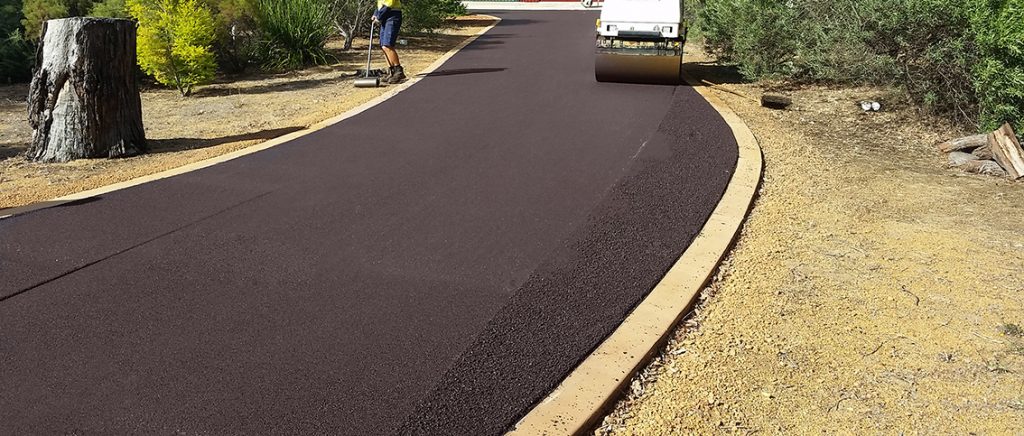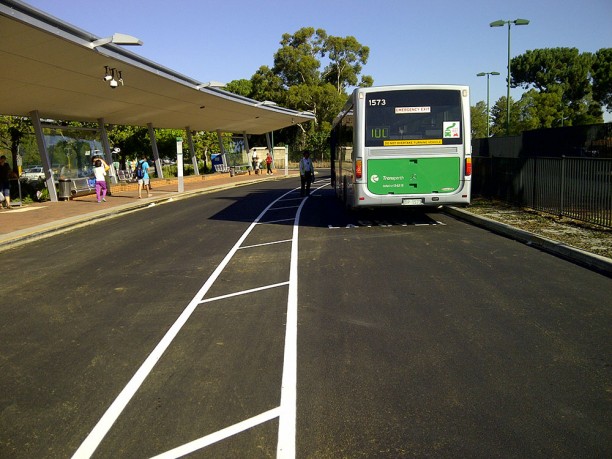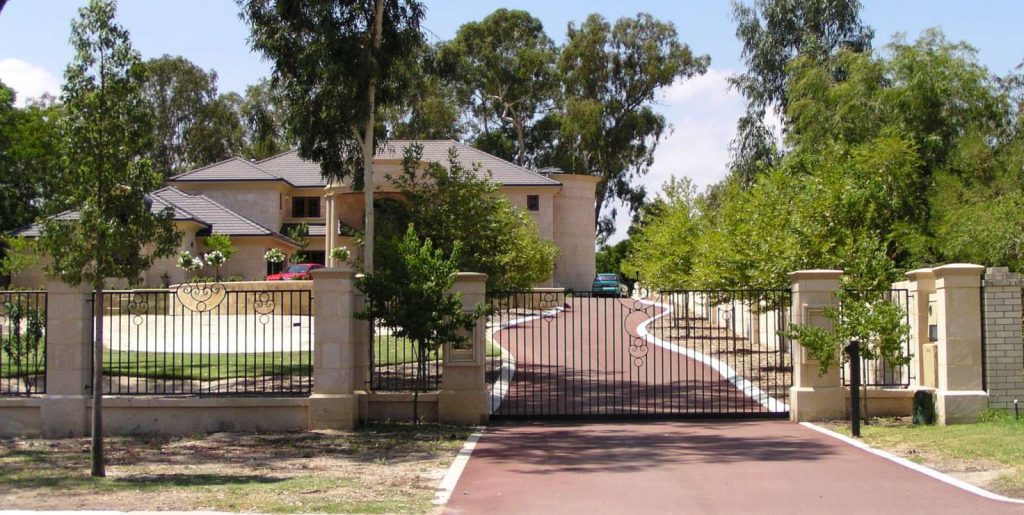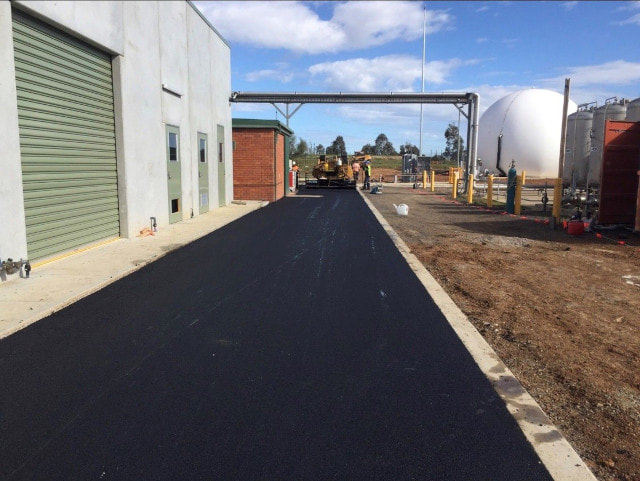Benefits of Asphalt
Asphalt not only offers superior resilience to ants, weeds and water, compared to other paving and construction materials, it’s also one of the most cost-effective solutions for both commercial and residential projects.
Compared to paving materials like bricks, slabs or pavers, asphalt has more flexibility to shape to curves and corners, allowing for a tight seal with and kerbing and reducing the gaps where water and debris can penetrate. Bricks, slabs and pavers are also venerable to movement and shifting causing separation between each piece.

Colours of Asphalt
We supply asphalt for commercial and residential projects in three colours to give you the flexibility to create your asphalt project in a design that suits your home, business or landscaping. Our asphalt solutions are available in the following colours:
- Standard granite asphalt is black initially, becoming grey
- Gravel/laterite asphalt (no oxide) is almost black, becoming dark brown
- 1% red oxide gravel/laterite asphalt is a dark red/maroon initially becoming a lighter red/brown as the gravel becomes more visible.
Benefits of Hot Mix Asphalt (HMA)
As mentioned previously, hot mix asphalt is a type of asphalt that is mixed when the bitumen binder is heated to high temperature, usually around 150-175 degrees Celsius. Hot mix asphalt is combined at this heat to increase its viscosity and flexibility, making it easier to pour and spread, as well as forcing any moisture in the mixture to evaporate. This improves hot mix asphalt’s durability and resistance to water, improving the lifetime of the asphalt.
The flexibility of hot mix asphalt comes from its temperature but as soon as the asphalt begins to cool, it will become rigid and start to solidify. We’re lucky in Melbourne that our naturally warm climate allows us to use hot mix asphalt all year round, whereas some northern hemisphere countries are restricted to using hot mix asphalt only in the summer months.
Due to hot mix asphalt’s level of durability, resistance to weeds and water, and its smooth surface, it is the most popular choice for Melbourne airport runways, freeways, roads and carparks. This is why Melbourne Asphalt’s & Bitumen chooses to use hot mix asphalt on all our projects from large residential driveways, to shopping centre carparks, government and council projects and hardstands.

Asphalt or Bitumen
“Should I use asphalt or bitumen?”, is a common question we receive at Melbourne Asphalts & Bitumen. It can be confusing to understand as some people use these terms interchangeably so it can appear that they are talking about two different materials.
The answer to “should I use asphalt or bitumen”?
Asphalt is commonly mistaken for bitumen, but bitumen is actually a component of the mixture that makes up asphalt. In particular, bitumen in the binder that sticks all the ingredients of the asphalt aggregate together. So, when you’re choosing between asphalt or bitumen for a road, driveway, carpark, or commercial project, the answer is asphalt.
Here’s a detailed explanation of the differences in asphalt VS bitumen.
Asphalt or Concrete Driveway
Concrete is another common choice for carparks and driveways in Melbourne but it doesn’t offer the same resilience and value for money that asphalt can. If you’re choosing between asphalt or concrete driveway for your commercial or residential project, here are a few points to consider:

GLARE
Concrete can often reflect the sunlight off the surface due to the lighter colour, whereas asphalt is a low glare solution.
COLOUR
We supply asphalt in three colour options to suit your design and landscape. When colouring asphalt, the dye is mixed into the asphalt aggregate, staining both the gravel and the bitumen. Concrete is often painted the colour you desire, leaving it vulnerable to scratching and chipping.
REPAIRS
Damage is inevitable for asphalt or concrete, but repairs are far easier for asphalt due to the granular nature of the material. Concrete repairs may require excavating and removing an entire section, then pouring fresh concrete. Asphalt has a number of options for repairs, depending on the level of damage, but in general asphalt damage can be repaired by sweeping out the damaged area and resurfacing with new asphalt, reducing the need for machinery or labour to remove the concrete.






